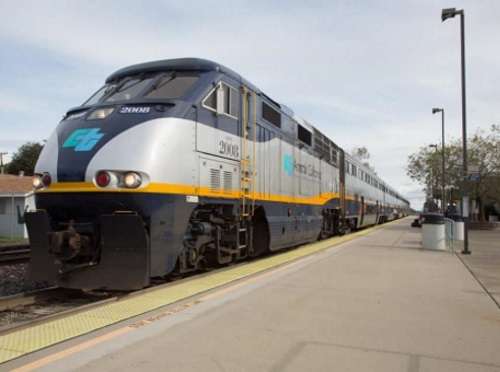Study: Transit-Oriented Development Can Save Money

A new report by the Mineta Transportation Institute examines how transit-oriented development or TODs could be an effective tool to ease the housing affordability problem by increasing housing supply and reducing transportation costs in transit-rich neighborhoods.
[Above photo by Caltrans]
According to the Federal Transit Administration, TODs include “a mix of commercial, residential, office and entertainment” centered around or located near a transit station – creating hubs that lead to the creation of “dense, walkable neighborhoods and communities.”
That MTI report – entitled Can Californian Households Save Money on Transportation Costs by Living in TODs? – used the confidential version of the 2010–2012 California Household Travel Survey to evaluate the impact of TOD on household transportation expenditures by comparing TOD households with two control groups.

MTI’s study found that, when controlling for demographics, TOD households save $1,232 per year on transportation expenditures or 18 percent of their total annual transportation expenditures. The firm’s research also determined that, when controlling for both demographics and supportive neighborhood environment – that is, one with higher land use density and mixed land use – TOD households save $429 per year or about 6 percent of their total annual transportation expenditures.
“The transportation cost savings have different implications for homeowners and renters living in TODs,” MTI noted in a statement. “Homeowners enjoy the double benefits of TOD: increased property values and savings in transportation costs. Renters, meanwhile, save money on transportation costs but may need to pay a rent premium to live in TODs.”
MTI’s report also attributed about 35 percent or $429 of the annual savings to better rail transit access, while attributing the other 65 percent in savings to living in a transit-friendly neighborhood with higher land use density. That highlights the importance of integrating a rail transit system with supportive land use planning and neighborhood design, MTI said.
Although TODs cannot solve the housing crisis alone, MTI said that – based on its study – by building more housing in transit-accessible neighborhoods, communities can shift the cost of housing and transportation and make major changes in the years to come. TODs may be an important tool in improving the circumstances of the housing crisis in California and the nation while moving toward a more sustainable future, the firm noted.
About As reported by the AASHTO Journal: https://aashtojournal.org
As reported by the AASHTO Journal: https://aashtojournal.org


